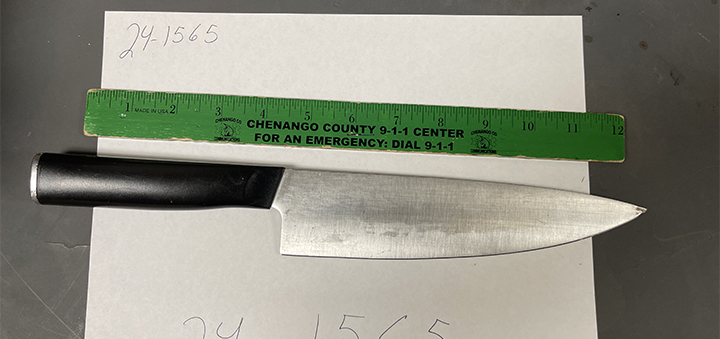Pike And Walleye Fishing
Published:
May 11th, 2017
Eric Davis
Mayhood’s Sporting Goods
CHENANGO COUNTY – The first Saturday in May marks the beginning of the open season for northern pike, chain pickerel, tiger muskellunge, and walleye.
The season for these fish closes on March 15, of next year. The gap of closed fishing allows these fish to spawn without being easy targets for fishermen. Pike typically spawn in flooded shallows – think swampy areas.
In some states, people spear pike or even shoot them with firearms. Chain pickerel spawn in shallow water that has vegetation where they deposit their eggs. Tiger muskellunge don’t spawn because they are a hybrid between the northern pike and the muskellunge. Walleye spawn in tributaries during middle to late spring – around mid-April around here.
For now we will focus on members of the pike genus, Esox. They have some similar characteristics that make them easy to identify as well as help you alter your fishing methods to make them easier to catch. They all have elongated bodies with their dorsal and pelvic fins being located farther back on their bodies. The positioning of the fins allows for rapid acceleration.
This indicates that the fish is a predator that chases down its prey. Not a huge surprise if you know anything about these fish. They have plenty of sharp teeth that are needed to grab live prey and keep it from squirming loose. The elongated body of the fish means that they don’t actively swim around searching for food – like a tuna or salmon, for example.
Pike and pickerel are lie-in-wait predators. They like to sit in a location and wait for their prey to swim by. Then they attack using a burst of speed. This would suggest that they like to hide in places where prey species will frequently swim by, such as the edge of weedbed’s or around stumps or logs.
This means that fisherman should focus their casts in these areas. Think, if I were going to hide somewhere to ambush a fish, where would it be?
Also, they are predators that eat almost anything that they can. There are plenty of videos online of pike eating baby ducks. Their aggressive nature makes it so you can use lures in bright colors or that make a lot of noise/vibration without worrying about spooking the fish as much.
There are still days where a more natural looking lure does better or where live bait seems to be the only thing that works. With most pike and pickerel fishing, big and shiny or big and bright are the way to go. This goes for live bait too. The saying you need big bait to catch big fish applies.
Large shiners or even suckers are go-to for large pike. If using a large baitfish, consider using a stinger rig so there is a hook at the front and the back of the minnow to make it easier to hook into a fish and prevent it from swallowing the hook and causing internal damage. Especially if you plan on releasing the fish.
Walleye are in a different family, Percidae, than the pike and pickerel.
The fish they are closely related to that you find around here is the yellow perch.
They also are predatory fish that feed mostly on smaller fishes but also eat invertebrates. These fish typically relate to the bottom of the body of water during the day and will move into shallower water at night to feed.
The walleye’s eyes are adapted to see better in murky or dark water. Fishing for walleyes is generally more productive in the evening and morning when the shift from day to night or night to day is occurring.
Lures that mimic small fish, such as crankbaits and jerkbaits are usually productive. When fishing during the day, techniques that get bait to the bottom are useful.
When using bottom bouncing rigs put worms, leeches, or minnows just above the bottom and in the face of any walleyes that are hanging out directly on the bottom. Lures that are retrieved at depths close to the bottom can be good choices as well, especially if trolling so the lure stays at a consistent depth.
Casting with a jighead rigged with a curly-tailed grub or a live minnow and dragging it along the bottom will put your presentation in the face of walleyes.
Be sure to watch your line closely as walleye are often soft biters so you won’t feel the bite with your rod but you will see your line skip a little.
Look for underwater features on the bottom that will hold fish during the day, such as deep weedbed’s, rock piles or underwater humps. A bottom contour map can help find some of these, as well as points or drop-offs.
If fishing in the evening or morning, try shallow flats adjacent to drop offs or other deeper waters. The walleyes will make their way back to deeper water as more and more daylight appears.
Whether you are trying to catch pike or walleye, knowing something about the fish itself can be beneficial. Knowing what they like to eat makes it easier to mimic it and knowing where they like to hang out narrows down where you want to fish, giving you a greater chance of being successful.
Comments






